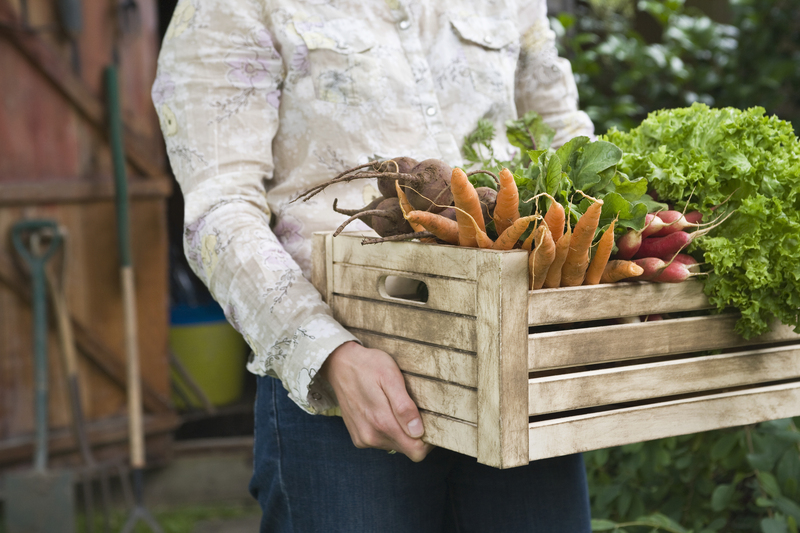5 cost-efficient ideas for a hassle-free garden
Posted on 27/05/2025
5 Cost-Efficient Ideas for a Hassle-Free Garden
Creating a beautiful and functional garden doesn't have to break the bank or require endless hours of maintenance. Many homeowners and gardening enthusiasts are searching for creative ways to cultivate a low-maintenance, budget-friendly garden that still brings peace and delight. In this article, we'll explore five cost-effective strategies to design a garden space that minimizes effort and maximizes satisfaction.
Whether you're a seasoned green thumb or a newcomer wanting your own peaceful retreat, these hassle-free gardening ideas will save you money, time, and stress. Let's discover how you can have a flourishing landscape without exhausting your wallet--or your weekends!
1. Choose Drought-Tolerant and Native Plants
One of the most significant ways to achieve a cost-effective and low-maintenance garden is by selecting plants that thrive naturally in your local climate. Native and drought-resistant plants are adapted to local soil, rainfall, and pests, so they require less water, fertilizer, and care.
- Lower Water Bills: Drought-tolerant plants like lavender, sage, and ornamental grasses flourish even in dry conditions, minimizing the need for irrigation.
- Minimal Upkeep: Native species are hardier and more disease-resistant, which reduces your need for chemical treatments and pruning.
- Environmental Benefits: These plants support local pollinators and require fewer resources, making your garden more sustainable.
For example, in a dry Mediterranean climate, planting rosemary, thyme, and succulents can add beauty while drastically cutting down on gardening expenses. In regions with consistent rainfall, explore local wildflowers and hardy ground covers.
2. Implement Mulching Techniques
Mulching is a tried-and-true, cost-conscious gardening hack that saves both time and money. Applying a layer of organic mulch (such as wood chips, bark, or compost) brings multiple benefits to your garden beds:
- Saves Water: Mulch keeps the soil moist by reducing evaporation, letting you water less frequently.
- Suppresses Weeds: A thick mulch layer blocks sunlight, preventing unwanted weeds from sprouting and spreading.
- Improves Soil Quality: As organic mulches break down, they feed the soil with beneficial nutrients and improve its structure.
- Reduces Maintenance: By locking in moisture and shutting out weeds, you'll spend less time weeding and watering.
Tip: Use readily available materials to keep costs down. Collect fallen leaves, grass clippings, or shredded branches from your yard. Local municipalities often offer wood chips for free or at a low price. With strategic mulching, you can maintain a neat, weed-resistant garden with less effort and expense.
3. Create Defined Garden Zones with Perennials and Ground Covers
One of the best ways to design a hassle-free garden is to structure your outdoor space effectively. Use perennial plants and dense ground covers to define areas and reduce ongoing work.
- Low-Cost Longevity: Perennials live for several years and come back stronger each season, giving you more value for your investment.
- Natural Weed Barrier: Ground covers like creeping thyme or sedum form dense carpets that crowd out weeds and reduce bare soil that requires attention.
- Effortless Expansion: Many perennials spread on their own, gradually filling in borders or problem spots with minimal human intervention.
Example garden zones include:
- A pollinator bed with salvia, echinacea, and yarrow to attract bees and butterflies
- A shaded corner with hostas and ferns for easy greenery in low-light areas
- A sunny rock garden of ground covers like ice plant and sedum for color without constant care
4. Use Smart Irrigation and Water-Saving Methods
Watering is often the most labor-intensive and expensive part of maintaining a garden. With a few smart investments and habits, you can significantly reduce both your workload and your water bill--without sacrificing plant health. Consider these budget-wise solutions for easy garden watering:
- Soaker Hoses and Drip Irrigation: These methods deliver water directly to plant roots, reducing waste and evaporation. You can often set timers, so you water early in the morning or late at night, when it's most effective.
- Rain Barrels: Harvesting rainwater is free and eco-friendly! Install a rain barrel beneath your downspout and use the collected water during dry spells.
- Group Plants by Water Needs: Designing your garden so thirsty plants are grouped together lets you target watering, rather than wasting resources on drought-tolerant species.
- Water-Wise Lawns: Reduce lawn areas in favor of ornamental beds, mulched pathways, and ground covers that require less moisture and mowing.
Smart irrigation means less time untangling hoses, smaller water bills, and garden beds that flourish with minimal intervention!
5. Incorporate Upcycled and DIY Garden Features
You can add structure, charm, and function to your garden without spending a fortune. Repurposing materials and embracing do-it-yourself garden solutions are at the heart of cost-conscious, low-maintenance outdoor spaces.
- Upcycled Planters: Old buckets, barrels, or even sturdy shopping bags can be transformed into unique planters for herbs, flowers, or vegetables.
- DIY Pathways: Lay down stepping stones, gravel, or reclaimed bricks to create easy-to-maintain walkways that also suppress weeds.
- Simple Raised Beds: Construct small raised beds from pallets, untreated lumber, or leftover bricks. These minimize weeding and watering, and are ideal for organized, productive vegetable gardens.
- Garden Art and Structures: Use old tools, broken pots, or driftwood as rustic art and support for climbing plants.
DIY and repurposed garden features not only trim costs and add character but often require less ongoing care compared to traditional landscaping. For an extra touch of sustainability, source materials locally and avoid buying new whenever possible.

How to Maintain a Hassle-Free Garden Year After Year
Beyond these five ideas, a truly hassle-free garden benefits from a few ongoing habits:
- Regular Observation: Take a few minutes each week to check for weeds, pests, or irrigation issues. Early action prevents small problems from becoming big headaches.
- Seasonal Mulching and Pruning: Refresh mulch annually and prune perennials after flowering to keep your garden tidy and thriving.
- Learning and Adapting: Observe which plants perform best with the least effort, and gradually favor them as you expand or replace sections.
- Minimal-Input Fertilization: Use compost or slow-release organic fertilizers once or twice a year, rather than frequent chemical feeding.
Consistency is key: A few well-timed actions each season will save countless hours--and dollars--over time.

Frequently Asked Questions on Cost-Efficient, Hassle-Free Gardening
Are there specific garden styles that are more cost-effective and low-maintenance?
Yes! Xeriscaping (gardening with minimal water use) and naturalistic gardens focusing on native plants and wild arrangements are famous for their simplicity and low costs. Rock gardens, prairie-themed borders, and meadows are wonderful options for those seeking style with minimal input.
How can I start my hassle-free garden on a tight budget?
Start small and use what you have! Divide existing perennials, exchange seeds and plants with neighbors, and check for free mulch or compost from municipal sources. Focus on one zone at a time rather than trying to overhaul your entire yard, and master simple DIY improvements that add beauty and function for less.
What are the best practices to keep a garden virtually "hassle-free?"
- Plant densely with perennials and ground covers for a living mulch effect
- Use rain barrels and mulch to conserve water
- Choose shrubs and trees that need little pruning
- Edge beds with recycled materials to reduce grass creeping in
Conclusion: Enjoy Your Budget-Friendly, Low-Maintenance Garden
You don't have to spend a fortune or commit to daily chores to enjoy a gorgeous outdoor space. By prioritizing native plants, embracing mulching and smart watering techniques, and adding upcycled garden features, you can achieve a functional, sustainable landscape that thrives with little intervention.
In summary, the five main cost-efficient ideas for a hassle-free garden are:
- Grow drought-tolerant and native plants for less watering and upkeep
- Mulch beds to suppress weeds and retain soil moisture
- Design garden zones with perennials and dense ground covers for year-round beauty
- Adopt water-saving techniques like drip irrigation and rain barrels
- Introduce DIY and upcycled features for unique, low-cost charm
Now is the perfect time to start your journey towards a budget-friendly, hassle-free garden. Choose the steps that fit your space, preferences, and resources, and watch your outdoor living area bloom with effortless beauty!

